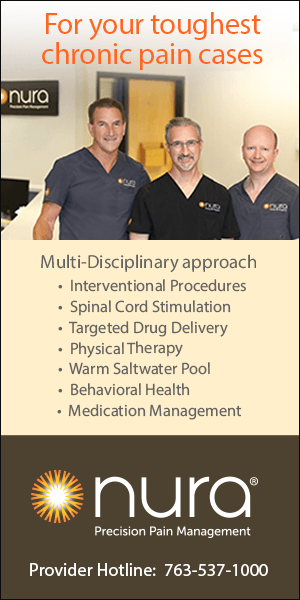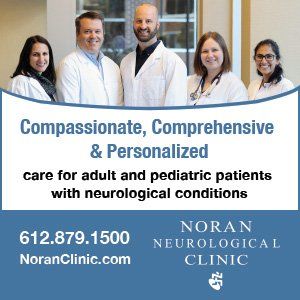eet George. He lives in rural Minnesota about 40 miles from your clinic. His wife of 30 years recently died of COVID, and he is hesitant to come in to see you, his primary care physician,because he fears the virus. He has several chronic conditions; a recent diagnosis of depression, uncontrolled diabetes, and high blood pressure. Despite your best efforts, he won’t come into the clinic. His medication list is long, and you’re concerned that he might not even be taking all his medications. In a pandemic-plagued practice setting, where do we go from here? Additionally, how can you leverage other members of the healthcare team specialized in helping patients like George?
cover story two
Telepharmacy
Improving Medication Therapy Management
BY SARA MASSEY, PHARMD, NATALIE ROY, PHARMD, AND KYLE WALBURG, PHARMD, CDCES
Comprehensive Medication Management
Comprehensive medication management (CMM) or medication therapy management (MTM) is a standardized care process performed by pharmacists in a variety of healthcare settings. The American College of Clinical Pharmacy (ACCP) defines CMM as:
... the standard of care that ensures each patient’s medications (i.e., prescription, nonprescription, alternative, traditional, vitamins, or nutritional supplements) are individually assessed to determine that each medication is appropriate for the patient, effective for the medical condition, safe given the comorbidities and other medications being taken, and able to be taken by the patient as intended. CMM includes an individualized care plan that achieves the intended goals of therapy with appropriate follow-up to determine actual patient outcomes. This all occurs because the patient understands, agrees with, and actively participates in the treatment regimen, thus optimizing each patient’s medication experience and clinical outcomes.
69.3% of patients were seen virtually in 2020 versus
6.2% of patients in 2019.
According to L. Strand, data suggest that providing CMM could help the Medicare program avoid about 670,000 emergency department visits annually, saving more than $500 million per year. Traditionally, most CMM visits have been performed in clinics, alongside medical provider visits, allowing for direct and open communication among the care team for medication recommendations. What happens when a global pandemic disrupts this approach? Telehealth can be broadly defined as remote delivery of healthcare services. Telemedicine can refer specifically to clinical service delivery from a healthcare provider. Telepharmacy refers to pharmacy services delivered remotely via audio and/or visual aids, which could include a wide variety of pharmacy roles and practice settings, such as patient counseling, dispensing, or CMM visits. Arguably, an impactful change from the pandemic has been increased uptake of telehealth visits for patients in need of care from a variety of specialities within the comfort and safety of their home.
Benefits of telepharmacy
George is an example of a patient you see daily in the clinic. You meet with him via telehealth to check in and witness his struggle with his medications, which can be seen through the bottles strewn about his home. He tearfully tells you his wife helped him pack his pill boxes. At the end of your visit, you refer him to an MTM pharmacist for a telehealth visit to clean up his medication list and help determine barriers for his success with medications. The pharmacist is able to meet with George and gain a better understanding of his medication needs. George was able to show his surroundings and medication bottles, in his own home environment, which allowed the pharmacist the ability to visualize all medications. Through their conversation, they are able to discuss and create a plan, together, that makes George feel more in control of his medications. Importantly, George didn’t need to leave his house, which was one of his barriers to care.
Minnesota pharmacists have provided robust MTM services for over 20 years. Most of Minnesota’s insurance payors cover the service now, enabling patients all over the state to easily access a clinical pharmacist. Telehealth or remote MTM started well before the coronavirus pandemic, but the care model has shifted even more so towards a virtual model in the last two years in order to accommodate social distancing, increase access, and utilize clinic spaces more efficiently. In particular, the option of telehealth for MTM services has allowed for greater access to healthcare for patients living in rural Minnesota. A patient seeing the remote MTM pharmacist at MHealth Fairview Neurology clinic commented on in a post-visit survey: “I like how I do not have to travel long hours to a visit.” Not only are remote MTM services more convenient to patients in rural Minnesota, but they also allow patient access to additional healthcare services and overall more comprehensive care. In another MTM patient satisfaction survey, a patient commented about their remote MTM experience: “I really felt I had my provider’s full attention the entire time.” Maybe a great benefit of video conferencing?
George’s story demonstrates that telehealth broadens a patient’s ability to access healthcare providers while still receiving quality care. Prior to the pandemic, Minnesota state Medicaid plans largely restricted MTM visits to an in-person modality. During the pandemic, patients with Medicaid insurance were able to see their MTM pharmacist via telephone or video, which resulted in a significant increase in the number of MTM visits conducted across all the major health systems in the state. As an example of the impact of this change, there was an increase in MTM visits by beneficiaries with HealthPartners Medicaid in Minnesota by about 37 percent from 2019 to 2020. At MHealth Fairview, 69.3% percent of patients seen for an MTM visit with Medicaid Fee-for-Service or Prepaid Medical Assistance Program (PMAP) plans were assisted virtually in 2020 versus 6.2% percent of patients in 2019. were seen virtually. The overall increase in number of MTM visits for these beneficiaries was 20% percent from 2019 to 2020. Hennepin Health was able to quantify an increase in completed visits for those patients who were referred to MTM by 9% percent from 2019 to 2020, showing an increase in likelihood that patients will follow through on referrals when conducted virtually.
More accessible team-based quality care is at our fingertips.
A successful solution
As outlined above, telehealth expansion yielded a successful platform for expanding quality patient care during the coronavirus pandemic. As documented by Hannah Mitchell, studies regarding impact on quality metrics and outcomes, patient satisfaction, patient accessibility, and provider satisfaction (such as influences on efficiency) should be considered. Importantly, as pointed out by J. Wosik, et al., although the Coronavirus Preparedness and Response Supplemental and Appropriations Act of 2020 allowed for a quick framework of billing and reimbursement for telehealth services, a more well-defined process with examined longevity should become a legislative priority.
Locally, the Minnesota Pharmacy Alliance (MPA), composed of Minnesota PharmacistsAssociation (MPhA) and Minnesota Society of Health-System Pharmacists (MSHP), have focused their efforts on expanding pharmacy services during the pandemic. In June 2021, the Minnesota House and Senate HFP/HHS Omnibus bill was passed. This bill included many components relating to pharmacy services and telehealth—more specifically to permanent remote MTM. The telehealth portions of the bill enhanced current language that required private and public insurers to pay the same for in-person care and telehealth. The bill allowed for remote and in-person MTM to be permanently billable. Now, more patients will be able to participate in telehealth through their insurance, which will potentially remove many barriers patients face—transportation, accessibility/travel, access to technology, time constraints, etc.
The approval of the legislation was critical for patients, providers, pharmacists, and pharmacies to ensure the continuation of successful remote MTM and telehealth visits through audio and visual or audio-only appointments. The pandemic challenged healthcare systems and processes to quickly change and evolve in order to meet the needs of patients in all parts of the country. Through this evolution of patient care, the need for patients and providers to have the ability to communicate from different locations became a necessity. As previously described, the access to and utility of pharmacists who provide remote MTM services have also expanded during the pandemic. Pharmacists can continue to play a vital role in patient care whether seeing patients in-person or virtually. An MTM pharmacist practicing pharmaceutical care can improve standards of care, patient satisfaction, lower healthcare costs, and improved physician quality of life. Healthcare is embarking on a new chapter of telehealth delivery of remote MTM services, allowing increased uptakeof these services due to more accessible delivery. Chances are your health system has an MTM pharmacist on your healthcare team. Whereas you were previously limited by location, perhaps preventing you and your patients from utilizing MTM services, delivery may be limited only by phone or internet service. More accessible team-based quality care is at our fingertips; patients just have to answer the call. “Hello George, this is your pharmacist calling…”
Sara Massey, PharmD, is Senior Specialist, Participant Medication Experience at MOBE.
Natalie Roy, PharmD, is an MTM Pharmacist at MHealth Fairview.
Kyle Walburg, PharmD, CDCES, is an MTM Pharmacist at North Memorial Health.
MORE STORIES IN THIS ISSUE
















